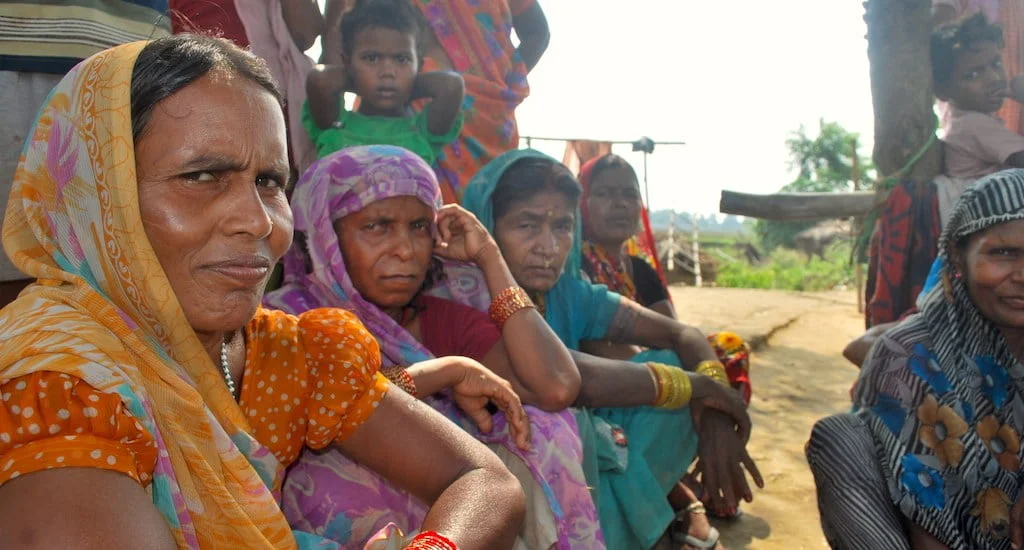The Women and Child Development Minister spoke at a conference on a proposal that is under discussion in the Cabinet (She clarified later in the day, that this was ‘just an idea’ and not a Cabinet proposal). She is backing a system that will involve the compulsory determination of the sex of the foetuses and the ‘tracking of attempts at female foeticide by the parents’ rather than ‘punishing the fraternity involved in the medical processes’. This statement has a very powerful subtext, which reveals that the Women and Child Development Minister of this country, would rather sanction the large-scale, state supported tracking of the pregnancies of women and the violation of their privacy than hold the medical fraternity accountable for sex-selective abortions.
Yes, sex-selective abortions are a result of son-preference and the structural disadvantages that women face, but it is naïve in the extreme to think that there has been no active complicity of the medical fraternity in India’s alarming declining sex ratio. A plethora of sting operations show clearly how many doctors have been willingly complicit in this practice. Yet, what is being proposed today, is to shift the onus on families, though registration of the sex of the foetus and the tracking of pregnancies. The full brunt of this decision will fall on women, some among whom are traumatized by the decision of aborting pregnancies on the basis of sex, but enjoy too little power and autonomy in the family to be able to protest the decision.
To understand the true meaning of this proposal/idea, which does sound like something out of 1984 (the novel, not the year), we need to keep a bit of the historical context in mind. There is an issue of disparity in access to healthcare and reproductive rights for women in India, with rural women and women living in poverty facing a pattern of disadvantage. In addition to this, in 2015, India has a maternal mortality ratio of 174. This means that 174 women died of pregnancy related causes or within 42 days of termination of pregnancy for 100,000 live births. With the problems in our medical infrastructure and particularly, rural medical infrastructure, and our large population, it is unlikely that there can be a realistic registration of the sex of the foetus and tracking of pregnancies, to see whether the registered female foetus was actually carried to term.
Somehow, even if this scheme were pulled off, it could be open to zealous abuse and misinterpretation. Who is to prove why a woman is getting an abortion? There may be a married woman with two children who may genuinely not want more kids. In this situation, holding her accountable to explain her reasons for the abortion of the foetus, because the new law would mandate that the sex of the foetus be registered, is ludicrous. In this context India ought not to ignore its dark history with privacy and reproductive rights. During the emergency (1975- 1977), there was a spine chilling period of overzealous sterilization drives attributed to the late Mr Sanjay Gandhi. The state regulating individual pregnancies seems to hark back to that era.
But, a confused reader may ask, how is it very different from the present legal position? To understand this a small review of India’s laws on the termination of pregnancies is very necessary. The abortion regime in India is governed by the Medical Termination of Pregnancy Act, 1971. The Section 3 of this Act allows pregnancies of up to 20 weeks to be terminated (with the consent of the woman) in the presence of 1 registered medical practitioner (in a pregnancy of up to 12 weeks) or 2 medical practitioners (from 12 weeks to 20 weeks), if they form an opinion in good faith that:
i. The continuance of the pregnancy would pose a risk to the mental or physical health of the pregnant woman,
ii. Or that the child, if born, will ‘suffer from such physical or mental abnormalities as to be seriously handicapped’.
The explanation to this section notes that a pregnancy alleged to be caused by rape will be presumed to constitute a grave injury to the mental health of the pregnant woman. The second explanation to this Section, makes provides a truly broad exemption. This exemption is a window into the intent of law-makers. It states that when there is a failure of contraceptives used by a married woman or her husband, the ‘anguish caused’ by the resulting pregnancy will be presumed to be a grave injury to the mental health of the woman. This explanation is problematic in that it allows the failure of contraceptives exemption only to married women. One could argue though that there is enough flexibility in the wording of the Act to permit the doctors to interpret that an unwanted pregnancy for an unmarried woman may cause a grave injury to her mental health. This section is an endorsement of the point of view that supports the choice of the pregnant woman to decide whether to carry the pregnancy to term. In doing so, it is respectful of her privacy and personal autonomy.
A reading of the MTP Act of 1971 along with provisions of the Indian Penal Code (which was drafted in 1860), however, ends up giving mixed messages. The Indian Penal Code in Section 312 makes it an offence to voluntarily cause a woman to miscarry, except to save the woman’s life. The consent of the woman is immaterial here, and she is liable under this section if she causes herself to miscarry. There is a separate Section (Section 313) on causing of miscarriage without the woman’s consent, which attracts a more severe punishment, and is not material to our discussion. A reading of Section 312 raises a serious question: is India a country where abortion is illegal, with only certain exceptions being carved out under the MTP Act? Well, on paper yes. But the broad nature of the exceptions (including failure of contraceptives) carved out in the MTP Act, in fact, has made India’s abortion regime a liberal one. So far.
The very obvious reason for the Indian state promoting a liberalized regime of abortions is that India had a very serious population problem, and family planning had to be on the table if the population growth rates had to stabilize. Allied to this may be the people’s own understanding of the fact that smaller families are an important tool to rise out of poverty.
The problem comes, when we go into the murky territory of sex-selective abortions (SSA), which is an insidious form of gender based discrimination. This has been the only site in the Indian public discourse that has really seen a tussle that has a pro-life/pro-choice polarity, where the activism has tended to walk on a tightrope in balancing the rights of future girl children, and women’s autonomy. The law has also been involved in this tightrope walk, as this article will illustrate.
A large number of activists choose to call SSA ‘female foeticide’, not necessarily because they believe in curtailing women’s choice to get an abortion, but because they feel that the term is more impactful. Similarly campaigns such as ‘beti bachao’ (save the girl child) aim to humanize the problem. The intent here is to make the campaign to prevent SSA more popular, by using less clinical terminology and imagery. However, there have been concerns from women’s groups that this powerful terminology could be used by vested interests to promote an agenda that curtails women’s right to choose whether to carry a pregnancy to term, resulting in a violation of her privacy and personal autonomy.
The Pre Conception and Pre-natal Diagnostic Techniques Act that governs sex-selections, skirts this debate (or walks the tightrope) by making the disclosure or determination of the sex of the foetus illegal, but remains silent on abortions. It is implied that sex-selective abortion, not being within one of the exceptions carved out by the MTP Act, is not legal in India. The thrust of the Act is the determination or selection of the sex of the child, and the misuse of medical technology to further this end. This way, the Act has shaped up to be a tool to combat sex-selection, while respecting women’s autonomy and privacy. There is a lot more that could be done, though, to implement the PCPNDT Act more effectively. The some sections of the medical fraternity, have of course, been very upset with this legislation. The problem would never have begun however, had the medical fraternity not flagrantly advertised sex-determination technologies, and said things like ‘Pay Rs. 5000 today and save Rs. 5 lakhs tomorrow’.
This legal tightrope walking has enable India to maintain a liberal abortion regime. The statements by the Hon’ble Minister have, however, opened up a can of worms. The carrying of a child within one’s womb is an incredibly personal experience. Requiring someone to compulsorily test the sex of this foetus, and then tracking their pregnancy is an unnecessary violation of their privacy, when a less invasive method is available to the Government at the moment, which has not been implemented well. The interesting question is, if women’s groups are going to assert their right to privacy as a facet of their reproductive rights, in response to this proposed change in the law, how is the State and society going to respond? Is there going to be a backlash that terms all abortions as ‘immoral’? Mrs Gandhi’s statements do not yet indicate an anti-abortion agenda, but the proposal/idea does betray a confusion about first principles. It also indicates a lack of understanding of how hard-fought the battle for women’s rights to choose whether to carry pregnancies to term has been. It is possible that this proposal/idea, if brought into force, will unwittingly set the clock back on women’s autonomy and their right to choose.
Featured Image Credit: Asian Correspondent
About the author(s)
Srishti Agnihotri regularly appears in Trial Courts, the Delhi High Court and the Supreme Court of India. She is involved in research and advocacy on women's rights and child rights. She completed her Masters in International Human Rights Law from the University of Notre Dame, USA.



